Travel To Vietnam From US: Tips, Guide, And FAQs
Travel To Vietnam Visas

Travel to Vietnam visas
It is a breeze for citizens of most countries, including the US, to get a Vietnam visa through the new e-visa process. Here is how it works:
After filling in a form, you will have to pay an administrative fee of 25 dollars for a 30-day single-entry tourist visa. Then, you will get an email confirmation within about three business days. You need to print two copies of the PDF document with the visa, and you'll need one copy on arrival and the other on departure.
After getting a vietnam visa, you now can successfully make a Vietnam Tour to explore this beautiful country.
What Is The Best Time To Travel To Vietnam?
When will you be able to travel to Vietnam? The answer is whatever you want. But what is the best time?
Vietnam is quite “long,” so it is arduous to determine the best time to visit this country. Vietnam consists of three main parts (North, Central, and South) that have vastly different climates, though they all have a monsoon/rainy season.
Northern
The North is the north of Vietnam, sharing a border with Laos to the west and China to the north. Ha-Long Bay, Sapa, and Hanoi belong to North Vietnam.
Northern typically enjoys cooler weather from November to March, which is also when precipitation is at its lowest level.
But as for regions, the weather from November to March could be cold and cloudy but relatively dry. In February, it might be pretty foggy that it is hard to admire anything, but you may just need a cardigan as it isn't that cold.
You should visit Sapa from September to October if you prefer to see the green rice terrace. This time is when rice is harvested, allowing you to get the best photos of this place. If you head over to Sapa between Jan and March, the weather may be less rainy.
Central
It is the “thinnest” part of Vietnam and enjoys a tropical climate. This part enjoys hot weather almost year-round. The famous places here include Hue, Hoi An, and Da Nang.
Central Vietnam, from September to November, gets the most amount of rain, and there is a high probability of flooding. For this reason, avoid visiting here during those rainy months.
Southern
Southern is famous for (Saigon) Ho Chi Minh City, Phu Quoc island, and the Mekong Delta. This part enjoys relatively consistent warm weather all year round, and the rainfall level peaks between May and October. The islands typically are warm enough even in winter but have the clearest skies in February.
Travel Guide To Vietnam

Travel guide to Vietnam
Accommodation
There are many hostels and hotels available in almost every famous place in Vietnam. A bed in a six- to eight-bed room with breakfast usually costs around $4, whereas a separate double room typically costs at least $8. Before making a reservation at a hotel or hostel, it is always best to check out the prices online.
Vaccination
No vaccinations are required for visiting this country, but it is best to have the basic travel vaccination package, including hepatitis A + B and typhoid.
You can consider a rabies vaccination (although it is rare to come across aggressive monkeys or dogs there) or a meningococcal vaccination.
Money and paying
The Vietnamese currency is the Vietnam dong (VND). Many visitors were confused about the ridiculously high conversion rate of Vietnam dong.
When writing the post, 1 EUR = 25,000 VND and $1 = 23,500 VND. This means 100 USD is equivalent to around 2.3 million VND.
Like in most Southeast Asian countries, cash is king in Vietnam. Apart from upscale restaurants and hotels, it is almost impossible to pay by card.
In most cases, a 3% fee is added to each transaction. So, it is recommended to travel with EUR or USD and transfer them into the local currency.
ATMs are available everywhere, with withdrawal fees ranging from 0 to 4%. So you should check a few before withdrawing. But beware, some ATMs only allow you to withdraw a maximum of 2,000,000 VND per withdrawal.
Food And Drinks
There is no denying that Vietnam is the sanctuary of foodies because it has rich and unique cuisine. As experienced by many travelers, it is a breeze to find the best food at markets, small local restaurants, or street stalls.
Each dish usually costs one to two dollars, depending on the location. The more touristy the area, the more costly the food. The highest prices seem to be in Hanoi, the center of Ho Chi Minh City and Sapa.
In Vietnam, tap water isn't drinkable, meaning not safe to drink. However, you can use water dispensers in restaurants and hotels without a problem.
Locals And Culture
Vietnamese are amiable, often smiling, and not afraid to say "Hi" to strangers. In most touristy places, they typically speak at least a bit of English, and restaurants often have English menus.
It is best to know at least several basic food names in Vietnamese, and they are not difficult at all! Here are a few food words worth learning:
Flat noodles.
Instant noodles.
Round noodles.
Beef.
Fish.
Chicken.
Stuffed baguette.
You should be ready to take off your footwear frequently, as you will typically be asked to leave them on a shoe cabinet or at the entrance. Even on long-distance buses, you will be asked to take them off at the door, put them in plastic bags, and utilize rubber slippers to get out during the breaks (the slippers and bags are provided).
In Vietnam, the way locals commute is quite special. The most popular means of transport here are motorbikes and scooters. The traffic is very chaotic, sometimes without any type of traffic regulations. Pedestrian crossings are almost not used or non-existent.
Regarding crossing the road, please follow this two-step guide:
Carefully pick the moment when no car, truck, or bus is approaching, then slowly step on the road. Don't expect a moment without motorbikes since this moment may never come.
Walk steadily and slowly toward the other side, letting the vehicles maneuver around you.
It may be a high-adrenaline experience for new visitors, but after several days, you will get used to it. It is a good idea to observe locals and join them as they cross.
It is essential to avoid sudden stops or abrupt movements in the middle of the road as it could confuse the driver. It seems terrifying, but it is what everyone does. Just go with the flow, and you will be okay!
Getting Around
It is a breeze to get around this country, and here are a few options:
Motorbike
Driving a motorbike is a convenient and great way to get around Vietnam. You can ride motorbikes up to 50 ccs without a Vietnam license, but it is not an excellent option for long distances. If you just simply want to ride around a town and city, it is the perfect option.
If you have a license and an International Driver’s Permit, it is okay to rent a more powerful motorbike in Vietnam and ride it on many scenic roads, such as the Ho Chi Minh trail and the famous Ha Giang Loop.
Bikes
If you are planning to travel in a small area, renting a bike (bicycle) from your hostel or hotel is the perfect option to get around.
Private Transfer or Taxi
The most convenient but expensive way to travel here is by private car or taxi. If you are keen on taking a taxi in Vietnam, you should download the Grab application, which works like Uber.
Plane
It is pretty cheap to travel by plane within Vietnam, especially since locals tend to take trains and buses more than planes. For example, you can find a flight from Da Nang to Hanoi that costs $40.
Train
Another common way to travel within this country is by train, including luxury overnight sleeper trains. Many areas within Vietnam are pretty far from each other, and the overnight train is the greatest option to utilize your time best and save money on hotels.
The most luxurious one features four beds (or two bunk beds) per room. It is ideal for a party of three or four passengers so that you can book up the whole cabin.
Bus
In Vietnam, locals often travel by bus, including overnight ones and some luxury sleeper buses. These buses feature fully reclining flatbeds, phone charging stations, fleece blankets, and more.
Internet And Mobile Data
It is highly recommended to get a SIM card when traveling in this country as SIM cards are incredibly cheap here, and having data will benefit you (data can help you avoid getting lost when walking around).
Prevalent tourist SIM cards are delivered by Mobiphone, Viettel, VinaPhone, and Vietnamobile. Viettel SIM cards are most favored by locals, so you can definitely consider them. You can easily find a 1-month tourist sim which costs around $15 (price and package may change).
Most other travelers purchase Vietnam SIM cards at the airport when they first arrive. You will need to have your phone and your passport unlocked to get the SIM card.
Another option is to visit the official stores to buy SIM cards. Avoid buying them from local shops since your SIM card might not be correctly registered.
Apps And Technology
In recent years, technology has made it more affordable, safer, and easier to travel than ever. Here are some apps you should acquaint yourself with before taking your first step into this country.
Grab: You can use this application to catch a ride from any area.
WiFi Finder: By using this app, it is unnecessary to guess whether the following place on your itinerary has WiFi or scramble across the city looking for hot spots.
Express VPN: It will protect users' sensitive information wherever they travel. Ensure to have this to keep online information secure as you travel.
XE Currency: Monitor, calculate currency, and transfer as needed. This application might not be totally necessary since you are usually tied to rates the banks charge for the services. But it’s handy to have around.
General Vietnam Travel Tips

General Vietnam travel tips
Here are some tips you should consider as you plan a trip to visit this country:
Watch Belongings: It is among the safe countries, but there is petty theft. Whether you are on a bus or at a restaurant, always watching your belongings is essential.
Show respect for the religious beliefs of locals and their cultures: Remember that you are traveling to another country. They have different cultures and religious beliefs. So please respect them.
Beware of the counterfeit tour agencies: Unfortunately, there are many of these around, especially in the main tourist areas. Book through the leading operator and owner.
Don't drink tap water: The locals do not even drink tap water. There's bottled water available everywhere. Popular tourist restaurants and hotels will typically include in their menu that they cleaned their veggies and salad in making tea and sterilize water, soup, and coffee from that too.
Toilet paper goes in the bin: Avoid putting the toilet paper in the toilet. Put it into the bin provided. Sewerage systems here aren't built for more than human waste. Hence, toilet paper and other items will clog up your toilet.
Embrace “Bum Gun”: There is a water hose next to every toilet, which isn't to wash down the floor. You can use it after you complete your business. Just embrace it instead of being disgusted by this.
Vietnam is bigger than many people think: Many people underestimate this huge country. Vietnam is approximately 1,650 kilometers long from north to south, so the distance on trains and buses is quite long. Be prepared!
Always wear a helmet: Traffic here is chaotic, and road conditions aren't the best. A high-quality helmet could save your life in an accident.
Always take photos when renting a motorbike: Renting a motorbike is something many tourists do in Vietnam. It's an excellent way to get around and visit all the attractions. But remember, whenever you rent a motorbike, you should take photos of the bike. If not, you might end up with a crazy costly bill.
Keep a low profile: Avoid being loud, raising your voice aggressively, or showing off. It is unwise to show dramatic affection publicly, such as kissing. Just save it for your room in the hotel.
Place chopsticks on the top of the bowl when finished: Avoid having your chopsticks hanging out of your bowl or pointing them at others when resting on the plate.
Avoid touching other people's heads: It is like saying you're more important than they are.
Never take photos of anything related to the military or government: It is a no-no in most countries and can end up with you in jail.
Ask for permission before taking photos of someone: It is polite and will ensure you aren't intruding on them. If they say no, just put a smile on your face and give them respect.
Do not show skin as you enter a temple: It is common in most religious settings. Your shoulders, thighs, and knees should be covered.
Take your shoes off before entering a person’s home or a temple: It's a custom rooted in antiquity. The ground here is typically used for dining, chatting, and even sleeping.
Ensure you have travel insurance: If you cannot afford travel insurance, you should not travel. You don't know what is going to happen when you're away. Knowing you're covered would put your mind at ease.
Why Travel To Vietnam?

There are many reasons to visit Vietnam
There are many reasons to travel to Vietnam. When you come here, you will never feel short of fascinating travel experiences across this beautiful country.
Breathtaking landscape
If you have a chance to discover Vietnam's hidden charm, your eyebrows will be raised by the beauties of several top-listed World Heritage Sites, such as Phong Nha Ke Bang National Park, Ha Long Bay, Hoi An Ancient Town, and much more.
About 1500 islands and islets in HaLong Bay have created a majestic seascape of limestone pillars. Whether a nature lover or a photographer, you will collect tons of satisfying pictures of various subjects.
Phong Nha-Ke Bang is a high-conservation value National Park as it is among the biggest areas of intact forest habitat remaining in the country. It also contributes to forming one of the largest forest areas on limestone karst in Indochina.
Some areas will astonish you even more. Dalat is romantic with many French-style villas, while Sapa is misty like a beautiful girl waking up in the morning. Moreover, the long coastline of Vietnam brings endless scenic sea views, private and leisurely sunbathing, strolls along the beach, and more.
Friendly and hospitable people
Most clients are impressed with the hospitality and friendliness of Vietnamese people. According to travelers, people are a precious treasure of Vietnam.
Whoever you are and where you come from, you are always welcomed by locals from North to South. They don't even mind saying "Hello" to strangers they meet on the street.
Ethnic minority people in Sapa always consider visitors as a friend, even if they are on their first visit to this place with a local guide. Hoi An people have a reputation for being honest, while Hue locals are royal-like in attitude but always welcoming. Farmers in the Mekong Delta always welcome visitors to their families with an enthusiastic attitude.
Affordability
Many budget-oriented travelers put Vietnam on their list of destinations because everything here is cheaper than they might expect.
hostels and guest houses are available in most cities and typically cost approximately US$30/per room/night. High-end adventure travelers also favor experiencing local street food, which is cheaper and more delicious than in many other nations.
The truth is that Vietnam is suffering from high inflation, with prices rising monthly, but it is still an affordable destination than many other countries.
Floating Markets In The Mekong Delta

Floating markets in the Mekong Delta
Navigating some floating markets in the Mekong Delta is also one of the unique features here. The river town of Can Tho sports some of the most popular floating markets, and you can find them all along the Mekong.
As anxious, chaotic, and crowded as street markets, the Mekong floating markets are truly an unforgettable experience.
Coffee
Coffee is a great thing, and Vietnam is the 2nd leading producer worldwide in terms of exporting this agricultural product.
It will be a pleasant experience to enjoy a mug of iced coffee or black coffee with condensed milk and admire life goes by on a corner of a street.
Many places allow you to take some coffee home, such as Highland Coffee (26 Le Loi, Ho Chi Minh City) and Coffee Mai (79 Le Van Huu, Hanoi).
Tasty And Exquisite Cuisine
Spring rolls, Bun Cha, and Pho noodles might be familiar to many travelers, as they are available in many countries. But Vietnamese food has gone beyond that and varies by region with different types of meat, poultry, fresh, and seafood.
Culinary adventurers love exploring the foods on the street, while high-end clients often take meals in some luxury colonial restaurants. Many travelers have decided to come back to HaLong Bay just because of the memorable and excellent seafood served onboard the traditional cruises.
World Famous Beaches

Nha Trang beach
For beach believers, Vietnam should be on their list. There is nothing better than time in the blue water under the shining. Let the waves of Mui Ne, Da Nang, or Nha Trang relieve all the stress of your busy day-to-day life.
Vietnam is home to several of the world's top beach listings. Most of them are safe to swim and join some interesting water-sport activities.
For example, in Nha Trang, you can do windsurfing and kite-running. In Da Nang, you can enjoy one of the most lavish beach resorts- a romantic place for both families and couples. In Mui Ne, you will have the opportunity to enjoy the quiet with some added wildness and join the seafood dinner venture.
Traditional Festivals
Thanks to the long history of Vietnam, Buddhist influence, and rich tradition, this country has many festivals organized all year round, some of which are fun to learn about and unheard of in the West.
For example, the Tet holiday is a great time to see how locals celebrate their love for their ancestors and each other.
Tet shouldn't be called or mistaken for Chinese New Year, which might even be an insult to several nationalists. It is similar to the Lunar New Year in some ways but modified to form a Vietnamese atmosphere.
For instance, in the countryside, locals typically stay overnight to cook Banh Chung with a bit of fire and some end-of-year gossip.
In Hai Phong, the buffalo fighting festival is among the well-known occasions: the winning buffalo will be killed to dedicate to the village god.
Some public holidays are also worth joining. Come to Vietnam on September 2nd, and you will see nationwide parades when all the streets are filled with red flags while fireworks light the sky at night.
Learn About The Vietnam War
Vietnam has been divided and occupied by many other countries for years, making its history very understandably complex. It is safe to say that no single event has battered a country worse than the Vietnam War.
These days, the aftermath of war is still preserved in many monuments and museums, such as the Cu Chi tunnels. Learning about the history of this country is a crucial, exciting history lesson that is definitely a must-do when visiting Vietnam.
Our Favorite Places to Travel in Vietnam
Here are the top 5 accommodation options we highly recommend for any traveler heading over to Vietnam.
Hanoi

Hanoi
Brief description
Hanoi is the vibrant capital of Vietnam and among the bright lights of cities in Asia. Like many other Asian cities, Hanoi is transforming rapidly. But if you are keen on history here, you'll certainly find it here.
This city is interesting. Although it seems old and crumbling in parts, it is a city wrought with character. With the abundance of French colonial architecture, tree-lined boulevards, and lakes, it is a great place to experience on foot.
What to do/Where to go
Take a trip to the Ho Chi Minh mausoleum.
Visit the memorial house.
Go shopping in the old quarter.
Tour the fine arts museum of Vietnam.
Visit Hoa Lo prison.
Walk around Hoan Kiem lake.
Visit the lotte tower observation deck.
Stroll around the imperial citadel.
Visit the museum of ethnology.
Tour the Vietnamese women’s museum.
Admire Bach Ma temple.
Tour the national museum of Vietnamese history.
Watch a performance at Thang Long water puppet theater.
Have a drink at Hanoi Social Club.
Go boating at West Lake.
Visit the Perfume Pagoda.
Admire Tran Quoc Pagoda.
Visit the Temple of Literature.
Walk around the Military History Museum.
Take in the views from Long Bien Bridge.
What to eat
Kem Xoi (Sticky rice ice cream).
Che Thap Cam (Sweet cold dessert).
Ca Phe Trung (Egg coffee).
Goi Cuon (Spring rolls).
Nem Chua Ran (Fried fermented pork).
Banh Goi (Cake filled with noodles and mushrooms).
Banh Xeo (Stuffed shrimp crepe).
Banh Bot Loc (Shrimp and pork dumplings).
Nom Bo (Beef jerky salad).
Banh Mi.
Lau (Hotpot).
Pho Bo (Vietnam’s flagship noodle soup).
Banh Cuon (Steamed rice rolls).
Bun Ca (Fish soup with noodles).
Cha Ca (Grilled fish with turmeric and dill).
Banh Tom (Fried shrimp cake).
Nem Cua Be (Crab spring rolls).
Mien Xao Luon (Noodles and fried eel).
Bun Cha (Barbecued pork with rice vermicelli).
Sapa
Brief description
Sapa was a famous place for both locals and international visitors a long time ago, with plenty of wonders of nature.
The perfect combination of stunning cloudy mountains, the beautification of rice fields, the blue of the forest, and the unique culture of the ethnic people create a charming, romantic painting and harmonious Sapa.
What to do/Where to go
Ham Rong Mountain.
Muong Hoa Valley.
Heaven Gate – Cổng Trời.
Silver waterfall – or Love waterfall (Thác Bạc).
Conquer Fansipan - Roof of Indochina.
Stay in a homestay and communicate with different ethnic tribes.
Rent a motorbike and drive around.
Trekking to a hill tribal village.
What to eat
Com Lam.
Dried Buffalo Meat
Free-range pig
Black Chicken
Grilled Food.
Men Men Sapa
Sapa peaches.
Sapa’s pear
Assam Apple wine
Wine from Assam apple.
Evil Chicken.
And more.
Ho Chi Minh City

Ho Chi Minh City
Brief description
Ho Chi Minh City, also known as Saigon, is among the best places to visit in Vietnam. From beautiful French architecture to delicious food, you will find no lack of things to do here.
There is no denying that Ho Chi Minh City is a city of discovery and energy. From the tastiest of street stalls to the classiest of restaurants, the cheapest of guesthouses to the finest of hotels, the scrum of the markets to the choicest of boutiques, there are tons of things to discover here.
It will be an enjoyable experience to wander through incense-infused temples to timeless alleys before heading over to some chic designer malls under sleek skyscrapers. This city breathes vitality and life into all who stay here, and visitors can't help but be hauled along for the ride.
What to do/Where to go
Explore the Fine Arts Museum.
Visit Giac Vien Pagoda.
Admire Cha Tam Church.
Visit the Jade Emperor Pagoda.
Tour Reunification Palace.
Visit the Central Office.
Take a Bonsai River Cruise.
Tour the War Remnants Museum.
Visit the Giac Lam Pagoda.
Browse in Ben Thanh Market.
Tour the Ho Chi Minh City Museum.
Admire the Phuoc An Hoi Quan Pagoda.
Scale the Bitexco Financial Tower.
Enjoy breakfast at Binh Tay Market.
Admire the Cao Dai Temple.
Crawl through the Cu Chi Tunnels.
Travel to the Mekong Delta.
Visit Notre Dame Cathedral.
Take a cooking class.
Tour the History Museum.
What to eat
Vietnamese beef hotpot.
Vietnamese sticky rice.
Mixed rice paper.
Grilled beef in lolot leaves.
Vietnamese summer rolls.
Seafood dishes.
Spicy beef noodle soup.
Southern rice noodle soup.
Vietnamese pancakes stuffed with meat.
Steamed rice pancake with minced pork.
Vietnamese rice noodle soup with beef broth.
Vietnamese traditional sweet dessert.
Vietnamese rice vermicelli with grilled pork.
Vietnamese crab soup with rice vermicelli.
Quang-style noodles with pork and shrimp.
Rice vermicelli with fried tofu and shrimp paste sauce
Vietnamese fermented fish paste soup with rice vermicelli.
Dalat

Dalat
Brief description
Dalat city is located in the south of Vietnam, between Ho Chi Minh City (Saigon) and the Nha Trang coastal city. Initially, it was developed by the French in the 1900s as a resort destination.
Nowadays, hints of that remain, with European-style buildings, tourist-centered amenities and attractions, and more. This vibrant city is surrounded by waterfalls and rolling countryside and is centered around the charming Xuan Huong lake.
It is a great place to stay, especially if you want to break up a journey from Vietnam's south to central.
What to do/Where to go
Explore Bidoup Nui Ba National Park.
Dine at Dalat Train Cafe.
Explore Lam Dong Museum.
Da Lat Cathedral.
Walk to the Thien Vuong Pagoda.
Eat at the Central Market.
Spend the day at the Valley of Love.
Visit Truc Lam Pagoda.
Trek to Prenn Falls.
Walk through the French Quarter.
Walk to the Pongour Falls.
Admire Linh Son Pagoda.
Visit Lat Village.
Have a drink at 100 Roofs Cafe.
Travel to Lam Ty Ni Pagoda.
Trek to Elephant Falls.
Visit Dalat Train Station.
Go out on Xuan Huong Lake.
Browse in Dalat Market.
Admire the Crazy House.
Visit Dalat Flower Gardens.
Enjoy Linh Phuoc Pagoda.
Admire the Lake of Sighs.
Walk to Datanla Waterfalls.
Bao Dai’s Summer Palace.
What to eat
Wonton noodles.
Chicken curry.
Char siu rice.
Chicken hotpot with Basil leaves.
Beef Hotpot.
Avocado ice cream.
Hot Soya Milk.
Stuffed snail with meat.
BBQ meat.
Vegetable hotpot.
Chicken Stuffed Pancake.
Beef noodles.
Grilled chicken with bamboo cooked rice.
Da Lat dry fruits.
Grilled corn and sweet potatoes.
Bread shumai.
Dalat pizza (Grilled rice paper).
And more.
Hoi An

Hoi An
Brief description
Hoi An is among the unique towns in Vietnam, and it is undoubtedly thanks to its history of thriving communities of Vietnamese, Chinese, and Japanese.
This ancient town is a complex of buildings, including wooden shophouses, pagodas, Chinese temples, Japanese bridges, and French-colonial houses.
Tranquil, cozy, and beautiful are what most visitors say about this place. Come here, and you will really enjoy the riverside at night when lanterns are lit up.
What to do/Where to go
Hike the Marble Mountains.
Take a Motorbike Tour.
Visit Tra Que Culinary Village.
Take a Cham Islands Tour.
Hit the Beach.
Visit Tam Thanh Mural Village.
Day Trip to My Son.
Treat Yourself.
Drink Bia Hoi.
Release a Lantern.
Attend a Lantern-Making Class.
Enjoy a Sunset River Cruise.
Attend a Hoi An Memories Show.
Take a Cooking Class.
Eat All the Things.
Check Out the Local Markets.
Take a Ride in a Basket Boat.
Go on a Hoi An Free Tour.
Visit a Tailor.
Go Sightseeing in the Old Town.
What to eat
Vietnamese Beef Noodles
Mini Pancake with Quail Eggs
Vietnamese Spring Rolls.
Grilled Pork in Rice Paper
Grilled Pork over Vermicelli
Vietnamese Pancake
Quang Seafood Noodle
Vietnamese Iced Coffee with Condensed Milk
Hoi An Chicken Rice
White Rose Dumpling
Pork Rice Noodles
Vietnamese Baguette Sandwich
FAQs
Is There Pickpocketing In Vietnam?
Like most Southeast countries, there is petty crime, including pickpocketing, here. So ensure to keep an eye on your wallets/bags closely, especially in crowded areas (and if you don't look Asian).
Many visitors reported that their purses were slashed from behind when shopping at street markets in Ho Chi Minh City.
If you have jewelry, such as necklaces and earrings, it is best to leave them at home. Remember that it is unwise to flaunt your wealth with them here.
Can Americans Travel To Vietnam?
Yes. All US citizens are welcome in Vietnam.
How Many Types Of Accommodations Are There In Vietnam?
Hotels
You can upgrade your travel experience by booking a room in a hotel rather than a bed in a hostel. Just spend a few dollars, and you will get more spacious and private space.
Generally, it is very reasonably priced. In some villages and towns, hotels are the only option. You can expect to spend $20 to 30 for a good hotel room in most villages, towns, and cities across Vietnam.
Hostels
There are many hostel options when travelers look for accommodations in this country. Whether you are looking for a cheaper place to stay overnight or prefer to make friends along the way, what you are keen on will be met in various hostels throughout the country.
Airbnb
Another decent option recently is AirBnB. You will likely find a little more personal and excellent value space with an Airbnb stay.
Where Can You Exchange Currency?
The unit of Vietnam currency is the Vietnamese Dong (VND), and the common places to exchange currency are banks and jewelry/gold shops.
Is Vietnam Safe To Travel?
It's no secret that Vietnam is among the safest countries and the locals are very friendly. In popular places, you can encounter pickpockets, especially in Saigon (Ho Chi Minh City).
Remember that taxi drivers will most likely try to rip you off. So it is good to be prepared. Use the Grab application (similar to Uber) to book a car or motorbike at a cost set in advance. You can use the application to explore the approximate trip price to negotiate with the driver before accepting a ride.
The Bottom Line
Hopefully, you will find this travel to Vietnam 2024 guide helpful. Whether you are from the US or anywhere on this globe, you are always welcome in Vietnam, a small but beautiful country hidden in Southeast Asia.
So what are you waiting for? Why don't you visit Vietnam this time to see, do, and touch, but also to taste and remember? If you have any comments or questions, feel free to leave them in the comment section below. Asia Tour Advisor is always willing to answer all your questions.
You may also like
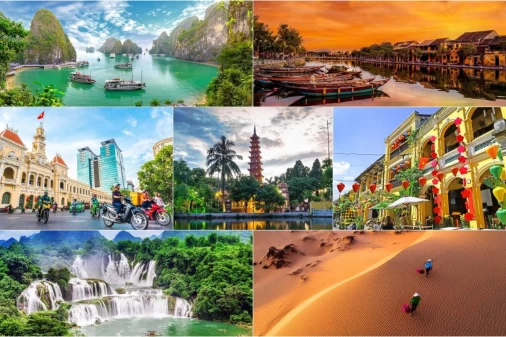
7 days Vietnam itinerary - The Epitome of the finest tours
Sometimes going on short trips can be exciting but also comes with some few challenges like planning...

Vietnam travel tips - The pathway to a perfect trip
Traveling to a new place especially for the first time can be quite demanding, due to human anxiousness...

Is Vietnam safe to travel? An advice to upcoming travelers
It is trite knowledge that Vietnam has some of the most beautiful and breathtaking landscapes as well...
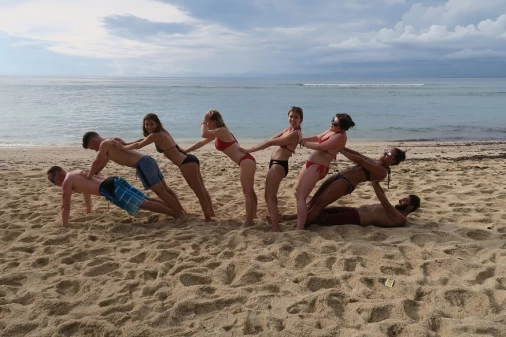
A guide to choose between Private tours and Group tours
It is often a challenge deciding between a private or a group tour, especially for first timers. Some...
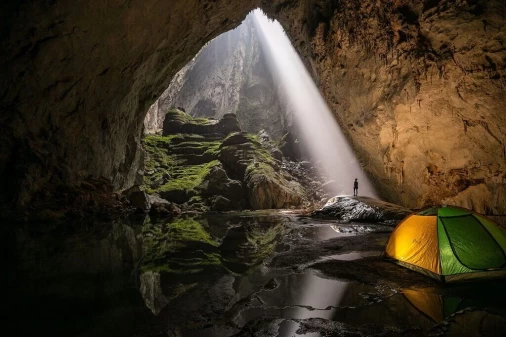
Central Vietnam Itinerary - An amazing Guide to the Perfect Tour
Having on standby the right key to navigate through central Vietnam is like a dream come true especially...
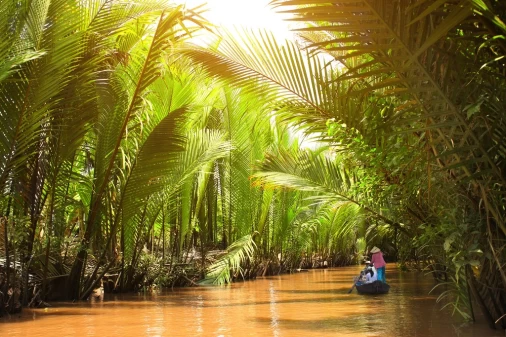
South Vietnam Itinerary- A treat to an impeccable beauty
Explore the Southern part of Vietnam as you treat yourself to the best parts only. Get to experience...

North Vietnam Itinerary - A comprehensive Guide to explore the North
Northern Vietnam is a region of aesthetic sceneries and landscapes with practically fascinating cultures...
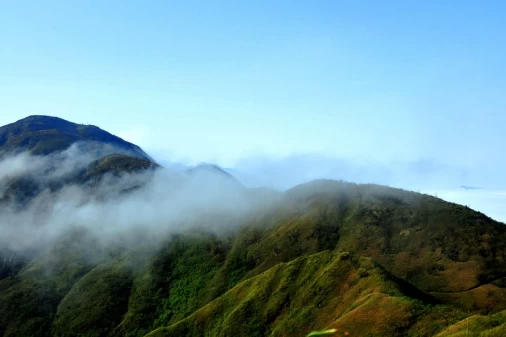
Fansipan Mountain - A solemn structure of Vietnam’s pinnacle
Explore an exciting journey with either a cable car or by hiking as you rise about 3,143 meters above...
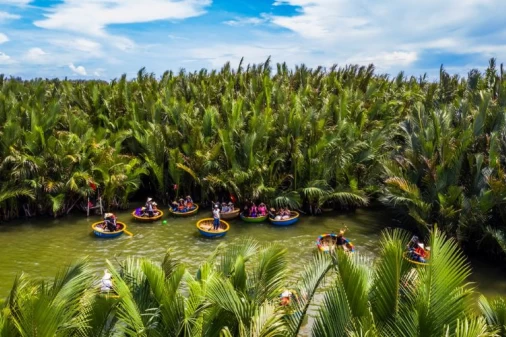
Bay Mau Coconut Forest - A fast rising destination for tourists
Bay Mau coconut forest is a very famous ecotourism site in Hoi An as well as the whole of Vietnam. It...
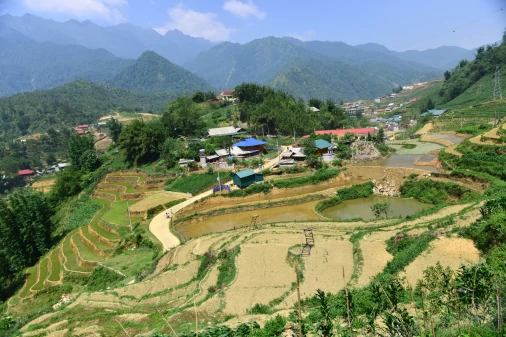
Y Linh Ho Village - Navigating The Charming North of Vietnam
Y Linh Ho village is a destination that is absolutely unique amongst the various tourist attractions...
 France
France  Spain
Spain  German
German  Italian
Italian 

 Vietnam Tours
Vietnam Tours  Cambodia Tours
Cambodia Tours  Myanmar tours
Myanmar tours  Thailand Tours
Thailand Tours  Laos Tours
Laos Tours